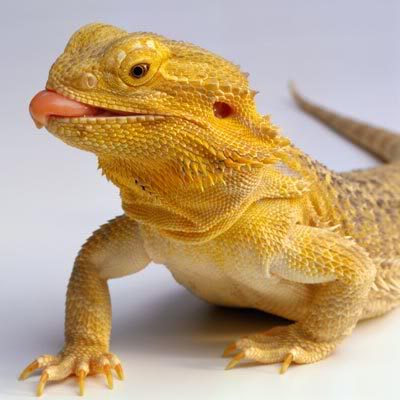The Ultimate Guide to Choosing the Ideal Bearded Dragon Tank Size
Introduction
Bearded dragons are fascinating pets that have become increasingly popular among pet enthusiasts over the years. These creatures are known for their unique appearance, calm demeanor, and friendly nature. However, to ensure that your bearded dragon thrives in captivity, you need to provide them with a comfortable and spacious habitat. In this article, we’ll discuss the different factors that you should consider when choosing the ideal bearded dragon tank size.
Factors to Consider When Choosing a Bearded Dragon Tank Size
Before you rush to buy a tank for your bearded dragon, it’s crucial to consider the factors that will affect the ideal tank size. These factors include:
- The size of your bearded dragon
- The number of bearded dragons you have
- The size of your room
- Your budget
The Size of Your Bearded Dragon
The size of your bearded dragon plays a significant role in determining the ideal tank size. Generally, adult bearded dragons can grow up to 20-24 inches in length, while juveniles can reach 10-12 inches. Therefore, it’s essential to consider the size of your bearded dragon when choosing a tank. A rule of thumb is to provide at least 2/3 square feet of floor space for a juvenile and 4/3 square feet for an adult. Additionally, the tank should be at least 18 inches high and 36 inches long.
The Number of Bearded Dragons You Have
If you have multiple bearded dragons, you’ll need a larger tank to ensure that they have enough space to move around freely. It’s recommended to provide at least 4/3 square feet of floor space for each adult bearded dragon and 2/3 square feet for each juvenile.
The Size of Your Room
The size of your room will also affect the ideal tank size for your bearded dragon. If you have limited space, you may need to opt for a smaller tank. However, it’s important to ensure that the tank is still spacious enough to provide a comfortable living environment for your pet.
Your Budget
The cost of a bearded dragon tank varies depending on the size and quality. Therefore, you’ll need to consider your budget when choosing a tank. Although you may be tempted to opt for a cheaper tank, it’s essential to invest in a high-quality tank that will provide a comfortable living environment for your pet.
Recommended Bearded Dragon Tank Sizes
Based on the factors above, the following are the recommended bearded dragon tank sizes:
20-Gallon Tank
A 20-gallon tank is suitable for a baby or juvenile bearded dragon that is less than 16 inches in length. The tank should be at least 18 inches high and 30 inches long.

40-Gallon Tank
A 40-gallon tank is suitable for a single adult bearded dragon that is between 16-20 inches in length. The tank should be at least 18 inches high and 36 inches long.

75-Gallon Tank
A 75-gallon tank is suitable for multiple adult bearded dragons or a single adult bearded dragon that is above 20 inches in length. The tank should be at least 18 inches high and 48 inches long.

Other Considerations
Aside from the tank size, there are other considerations that you should make to ensure that your bearded dragon thrives in captivity. Some of these considerations include:
- UV lighting
- Substrate
- Temperature and humidity
- Diet
UV Lighting
Bearded dragons require UV lighting to synthesize Vitamin D3, which is crucial for their bone health. Therefore, you’ll need to invest in a UVB light bulb that provides adequate UV radiation. The light should be on for 10-12 hours per day and should be replaced every 6-12 months.
Substrate
Bearded dragons require a substrate that will not only provide traction but also absorb moisture. Some suitable substrates include reptile carpet, ceramic tiles, and paper towels. Avoid using sand or gravel as substrate as they may cause impaction when ingested.
Temperature and Humidity
Bearded dragons require a warm and dry environment to thrive. The temperature in the basking area should be maintained at 100-110°F, while the cool end should be approximately 80°F. The humidity should be kept at 30-40%.
Diet
Bearded dragons are omnivores that require a balanced diet of protein, vegetables, and fruits. Some suitable foods include crickets, mealworms, kale, and carrots. Avoid feeding them insects caught in the wild as they may contain pesticides.
Conclusion
Choosing the ideal bearded dragon tank size is crucial in ensuring that your pet thrives in captivity. By considering your bearded dragon’s size, the number of bearded dragons you have, the size of your room, and your budget, you can choose a tank that provides adequate space and comfort for your pet. Additionally, you should ensure that you provide UV lighting, suitable substrate, proper temperature and humidity, and a balanced diet to ensure that your bearded dragon thrives in captivity.
